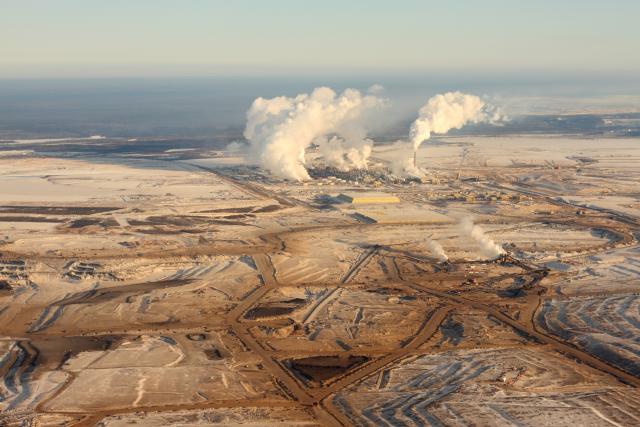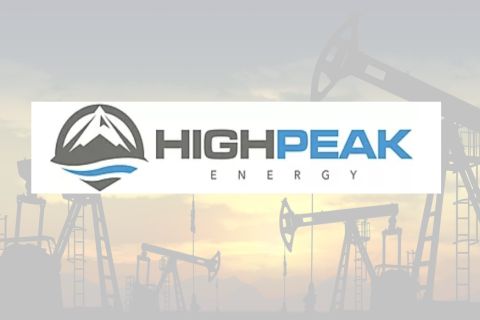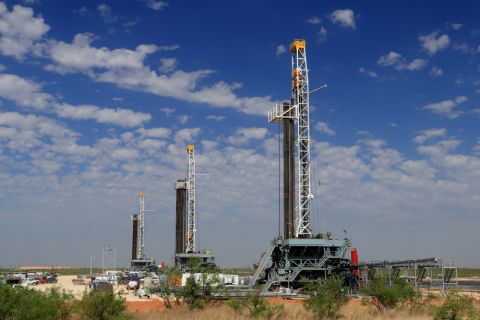
Oil sands in Canadian provinces are expected to contribute to increased emissions through 2025, according to a new report by Wood Mackenzie. (Source: Chris Kolaczan, Shutterstock.com)
It’s a precarious time for the oil majors. On one hand, they’re trying to remain profitable and productive in a depressed economic environment, and on the other hand they’re trying to do so while maintaining social responsibility with their environmental strategies. Companies like ExxonMobil, Chevron, BP, Shell and Statoil are making efforts to reduce carbon emissions and have backed the Paris Agreement.
Such efforts seem to be translating into real dollars, according to a recently released report by Wood Mackenzie that analyzed carbon emissions in the upstream sector and said that some $45 billion of oil and gas projects are at risk of getting approved.
The Wood Mackenzie report used data drawn from the company’s database of upstream information and focused on 25 majors, national oil companies and internationally focused large caps.
“The carbon emissions targets set by the Paris Agreement, together with potential policy changes, are starting to infl uence investors’ capital decisions and shape companies’ longterm corporate strategies,” said Dr. Gavin Law, head of gas and power consulting at Wood Mackenzie.
But despite the projected cut in financed projects, Wood Mackenzie reports carbon emissions from the assets it examined are expected to increase at a faster rate than production. According to the study, gross emissions will increase by 17% by 2025, while production will grow by 15% over the same period.
“This is being driven largely by the higher [emissions] intensity of primary growth themes—heavy oil, oil sands and liquefied natural gas,” said Amy Bowe, co-author of the study.
Bowe added that conventional onshore assets are still the largest single source of emissions and production to 2025 but are expected to decline in each case.
As the Wood Mackenzie report showed, heavy oil and oil sands appear to be among the biggest culprits in the expected emissions increase based on their emissions intensity, which the company defines as the volume of emissions per unit of energy produced. Heavy oil and oil sands account for only about 4% of global production but are responsible for about 12% of the global upstream emissions in the cases studied by the company.
Major oil companies, including Murphy Oil, Chevron, ExxonMobil, BP and Statoil, see this too, and they have either divested their interests in oil sands and heavy oil plays or are exploring options to do so. A new carbon tax implemented by the Canadian government will begin in 2018, although TD Ameritrade reports that if the price of oil climbs and stays above about $60/ bbl, that tax may not have much of an impact on investment decisions.
The concept of a carbon tax is one that some companies, most notably ExxonMobil, have supported in an effort to reduce carbon emissions.
“More countries are placing a price on carbon or imposing carbon-related regulations,” Law said. “This increases cost. It has never been more important to understand the value at risk.”
Recommended Reading
For Sale, Again: Oily Northern Midland’s HighPeak Energy
2024-03-08 - The E&P is looking to hitch a ride on heated, renewed Permian Basin M&A.
CEO: Continental Adds Midland Basin Acreage, Explores Woodford, Barnett
2024-04-11 - Continental Resources is adding leases in Midland and Ector counties, Texas, as the private E&P hunts for drilling locations to explore. Continental is also testing deeper Barnett and Woodford intervals across its Permian footprint, CEO Doug Lawler said in an exclusive interview.
Chevron Hunts Upside for Oil Recovery, D&C Savings with Permian Pilots
2024-02-06 - New techniques and technologies being piloted by Chevron in the Permian Basin are improving drilling and completed cycle times. Executives at the California-based major hope to eventually improve overall resource recovery from its shale portfolio.
TPH: Lower 48 to Shed Rigs Through 3Q Before Gas Plays Rebound
2024-03-13 - TPH&Co. analysis shows the Permian Basin will lose rigs near term, but as activity in gassy plays ticks up later this year, the Permian may be headed towards muted activity into 2025.
CNX, Appalachia Peers Defer Completions as NatGas Prices Languish
2024-04-25 - Henry Hub blues: CNX Resources and other Appalachia producers are slashing production and deferring well completions as natural gas spot prices hover near record lows.





